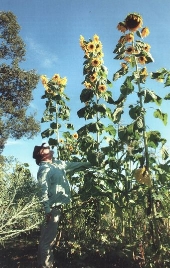
 6
6




Professional photographer and nature lover. Zone 8b, Bulgaria.

 5
5




- Tim's Homestead Journal - Purchase a copy of Building a Better World in Your Backyard - Purchase 6 Decks of Permaculture Cards -
- Purchase 12x Decks of Permaculture Cards - Purchase a copy of the SKIP Book - Purchase 12x copies of Building a Better World in your Backyard
 5
5




Professional photographer and nature lover. Zone 8b, Bulgaria.

 8
8





How Permies works: https://permies.com/wiki/34193/permies-works-links-threads
My projects on Skye: The tree field, Growing and landracing, perennial polycultures, "Don't dream it - be it! "
 12
12




Nancy Reading wrote:
I personally would never use plastic weed membrane barrier again, having had problems removing it from around my trees. I guess it depends on whether trees are likely to seed themselves in your pathway.

Professional photographer and nature lover. Zone 8b, Bulgaria.
 9
9




I'm only 64! That's not to old to learn to be a permie, right?
 7
7




 3
3




 3
3




 5
5




 2
2




Don Komarechka wrote:
But my question is this: I can't find an example of anyone doing this with these larger slabs in a vertical orientation. That might mean there is something incorrect about the idea, or maybe it's just an expensive option in many areas. They may bend out over time, which could be corrected or fastened with concrete underground (I don't want to do this for a number of reasons).
 3
3




Peter White wrote:It depends on whether you plan to have grass or creepers that you need to keep out of the beds. Overlapped stone will not prevent grass or creepers from infiltrating. Probably fine with mortar our a non biodegradable liner though. It'll look great.
Professional photographer and nature lover. Zone 8b, Bulgaria.

 7
7




Failure is a stepping stone to success. Failing is not quitting - Stopping trying is 
Never retire every one thinks you have more time to help them - We have never been so busy 
 4
4




Peter White wrote:It depends on whether you plan to have grass or creepers that you need to keep out of the beds. Overlapped stone will not prevent grass or creepers from infiltrating. Probably fine with mortar our a non biodegradable liner though. It'll look great.
 5
5




Paul Fookes wrote:If you are placing the large slaps vertical, start with sloping them in about five (5) degrees inwards. That way, you will have a fulcrum effect. With the effect of gravity, the blocks will tend to push out from the bottom. and compress the back fill outside of the bed.
Scott Weinberg wrote:By the way, Peter, in my opinion is very correct, it might take a few years, but things outside of the bed, will want to get inside your beds. The cracks really help the things get it.
Best of success.
 Thanks for your other comments as well - we grow a number of trees in pots and are considering peppers this year, such that we can overwinter them inside for a second year and greater productivity on more mature plants.
Thanks for your other comments as well - we grow a number of trees in pots and are considering peppers this year, such that we can overwinter them inside for a second year and greater productivity on more mature plants.Professional photographer and nature lover. Zone 8b, Bulgaria.
 8
8





Professional photographer and nature lover. Zone 8b, Bulgaria.




 2
2





 6
6






Professional photographer and nature lover. Zone 8b, Bulgaria.












 3
3





- Tim's Homestead Journal - Purchase a copy of Building a Better World in Your Backyard - Purchase 6 Decks of Permaculture Cards -
- Purchase 12x Decks of Permaculture Cards - Purchase a copy of the SKIP Book - Purchase 12x copies of Building a Better World in your Backyard
 4
4






Professional photographer and nature lover. Zone 8b, Bulgaria.
















How Permies works: https://permies.com/wiki/34193/permies-works-links-threads
My projects on Skye: The tree field, Growing and landracing, perennial polycultures, "Don't dream it - be it! "
 1
1




Nancy Reading wrote:That's looking great Don. You can really see it coming together.
I'm wondering whether the reflective nature of the stones give opportunities for some really hot microclimates? That could be a good or a bad thing depending on your climate. I'm not sure how hot/cold your weather gets, but something to consider perhaps.
Professional photographer and nature lover. Zone 8b, Bulgaria.
 6
6




Tina Wolf wrote:What a creative idea! They look fantastic, artsy, and functional! You could always add in a dry stack seat using the same technique Tim did in his dry stack moon gate. Or, maybe a bench?


Professional photographer and nature lover. Zone 8b, Bulgaria.




 2
2




 1
1





Professional photographer and nature lover. Zone 8b, Bulgaria.
 3
3




Clay, shade, neighbor’s Norway maples.....we’ll work it out.





